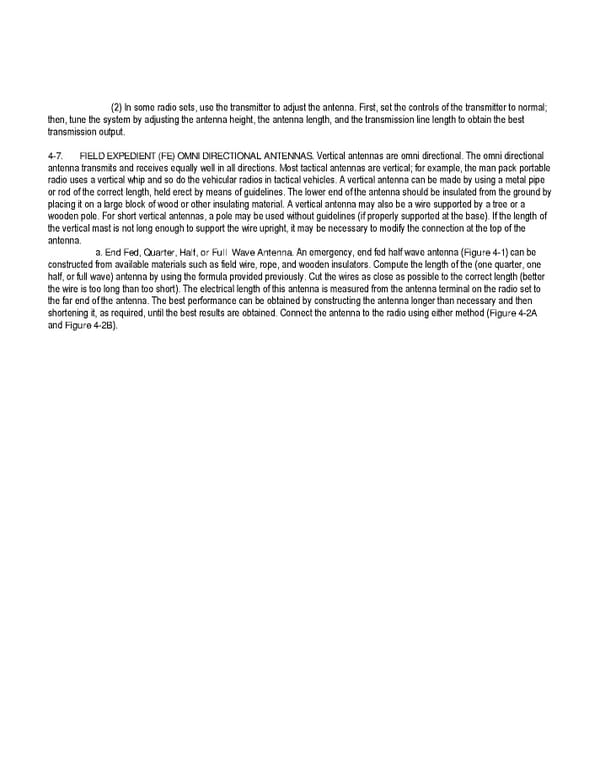(2) In some radio sets, use the transmitter to adjust the antenna. First, set the controls of the transmitter to normal; then, tune the system by adjusting the antenna height, the antenna length, and the transmission line length to obtain the best transmission output. 4-7. FIELD EXPEDIENT (FE) OMNI DIRECTIONAL ANTENNAS. Vertical antennas are omni directional. The omni directional antenna transmits and receives equally well in all directions. Most tactical antennas are vertical; for example, the man pack portable radio uses a vertical whip and so do the vehicular radios in tactical vehicles. A vertical antenna can be made by using a metal pipe or rod of the correct length, held erect by means of guidelines. The lower end of the antenna should be insulated from the ground by placing it on a large block of wood or other insulating material. A vertical antenna may also be a wire supported by a tree or a wooden pole. For short vertical antennas, a pole may be used without guidelines (if properly supported at the base). If the length of the vertical mast is not long enough to support the wire upright, it may be necessary to modify the connection at the top of the antenna. a. End Fed, Quarter, Half, or Full Wave Antenna. An emergency, end fed half wave antenna (Figure 4-1) can be constructed from available materials such as field wire, rope, and wooden insulators. Compute the length of the (one quarter, one half, or full wave) antenna by using the formula provided previously. Cut the wires as close as possible to the correct length (better the wire is too long than too short). The electrical length of this antenna is measured from the antenna terminal on the radio set to the far end of the antenna. The best performance can be obtained by constructing the antenna longer than necessary and then shortening it, as required, until the best results are obtained. Connect the antenna to the radio using either method (Figure 4-2A and Figure 4-2B).
 Ranger Handbook Page 75 Page 77
Ranger Handbook Page 75 Page 77